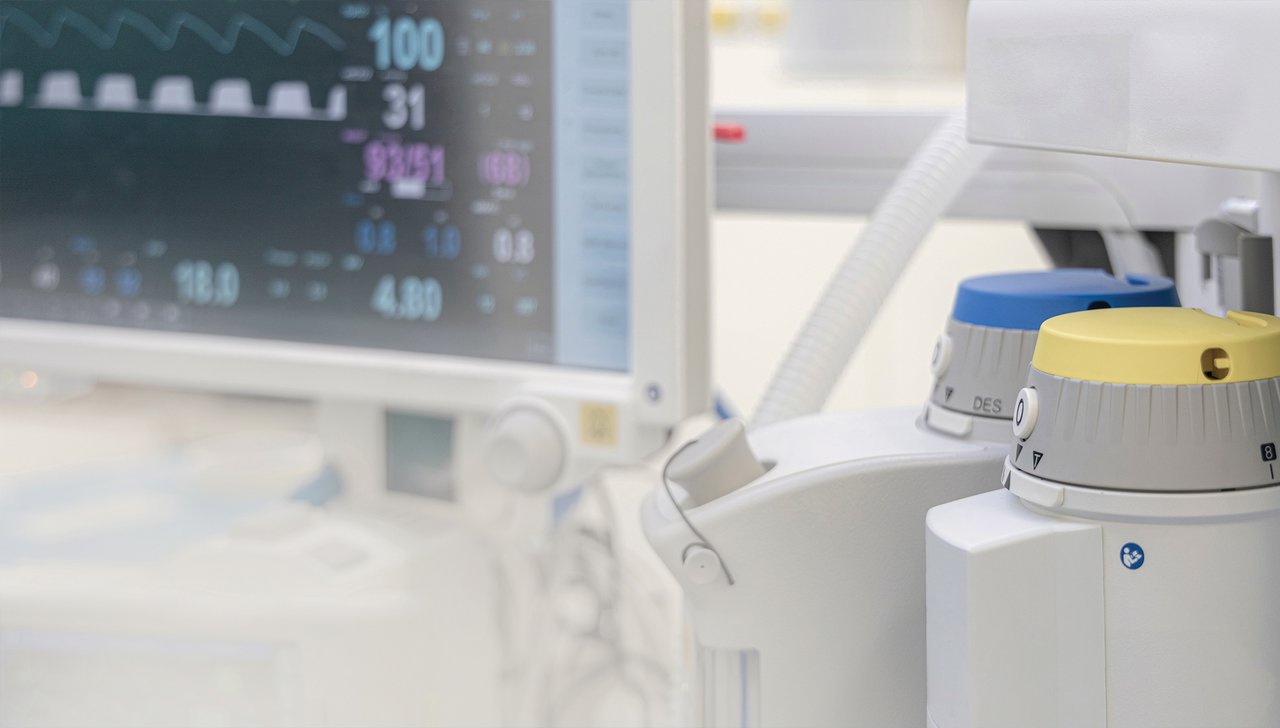Follow us on:
CONTACT US | Download the 2021/2022 issue | ©Atlas Copco AB



result
Search
A MAGAZINE FROM ATLAS COPCO GROUP
Sustainable technologies
Markets
Smart manufacturing
Our culture
Service and Consulting
Energy efficiency

Ushering
hospitals into
a sustainable future
This revolutionary technology enables hospitals to eliminate the anesthetic emissions that are harming the planet’s atmosphere.
If you were to guess which industries are significant emitters of greenhouse gases, you might think of aviation or automotive or perhaps agriculture. Few would pick healthcare.
Hospitals are running 24/7, and depending on the type of anesthetics used, these gases have a global warming effect that is 2,000 to 6,000 times more harmful than CO2. Today, most hospitals release these gases into the air unabated.
Inventing a way to capture the harmful gases
To address this issue, Class 1, a supplier of medical air and vacuum systems to Canadian healthcare facilities, has developed a solution called Halogenated Drug Recovery (HDR). This patented method captures halogenated (anesthetic) drugs into storage tanks via a centralized system. The drugs are then safely stored for final conversion into a substance that has minimum impact environmentally. A handful of North American hospitals currently have the solution installed.
“Because of the growing climate focus, many more healthcare facilities are showing interest in HDR and our final conversion process,” says Marian Boyer, VP Operations at Class 1. “We will also be able to supply data as to the amount of anesthetics our customers have been capturing, enabling them to accurately report their reductions in greenhouse gas emissions.”
Apart from the obvious environmental benefits, there are financial incentives too. Hospitals in many countries have emission thresholds that trigger fines when breached. Hospitals that reduce pollution to well below those thresholds can enter the carbon credit market, trading credits with emitters that are unable to meet their targets.
Equipment trial in Canada
The research that culminated in HDR began in 2009 with a partnership with the University of Waterloo in Ontario, Canada, that uncovered just how polluting anesthetics really were. That was the beginning of a collaborative journey that proved anesthetics could be captured into a centralized system without hurting the environment.
“At this point we were one of the very few organizations in the world that claimed to have a system that centralized the capture of the gases, so as we finalized the first version of HDR, we started to apply for patents,” Marian Boyer says.
In 2011, as Class 1 began an HDR equipment trial at Grand River Hospital in Kitchener, Ontario, educational institutions as healthcare organizations were becoming aware of the damage anesthetic gases were doing to the planet’s atmosphere. In 2013, Class 1 began receiving several inquiries as to whether the company had a solution for the problem. By 2015 the HDR trial at Grand River was a success: the equipment was able to capture 99% of anesthetic emissions.
Part of a sustainable business
Since the trial, HDR has moved through multiple refinements and is now on its fifth generation. Class 1 intends to continue rolling out HDR across North America before expanding globally. The company holds patents for the technology in Canada, the United States, Europe, UK, India and Australia.
In 2019, Class 1 was acquired by the Atlas Copco Group.
“One of the many key drivers behind this was our common goals and focus on sustainability in general,” says Michael Sue, General Manager of Class 1. “Equally as important are the synergies when it comes to our full range of medical gas solutions for healthcare facilities, which should include HDR as a standard.”

Because of the growing climate focus, many more healthcare facilities are showing interest in Halogenated Drug Recovery and our final conversion process.”

Marian Boyer
VP Operations,
Class 1
The Atlas Copco Group can now offer our full range of medical gas solutions for healthcare facilities, which should include HDR as a standard.”

Michael Sue
General Manager,
Class 1




